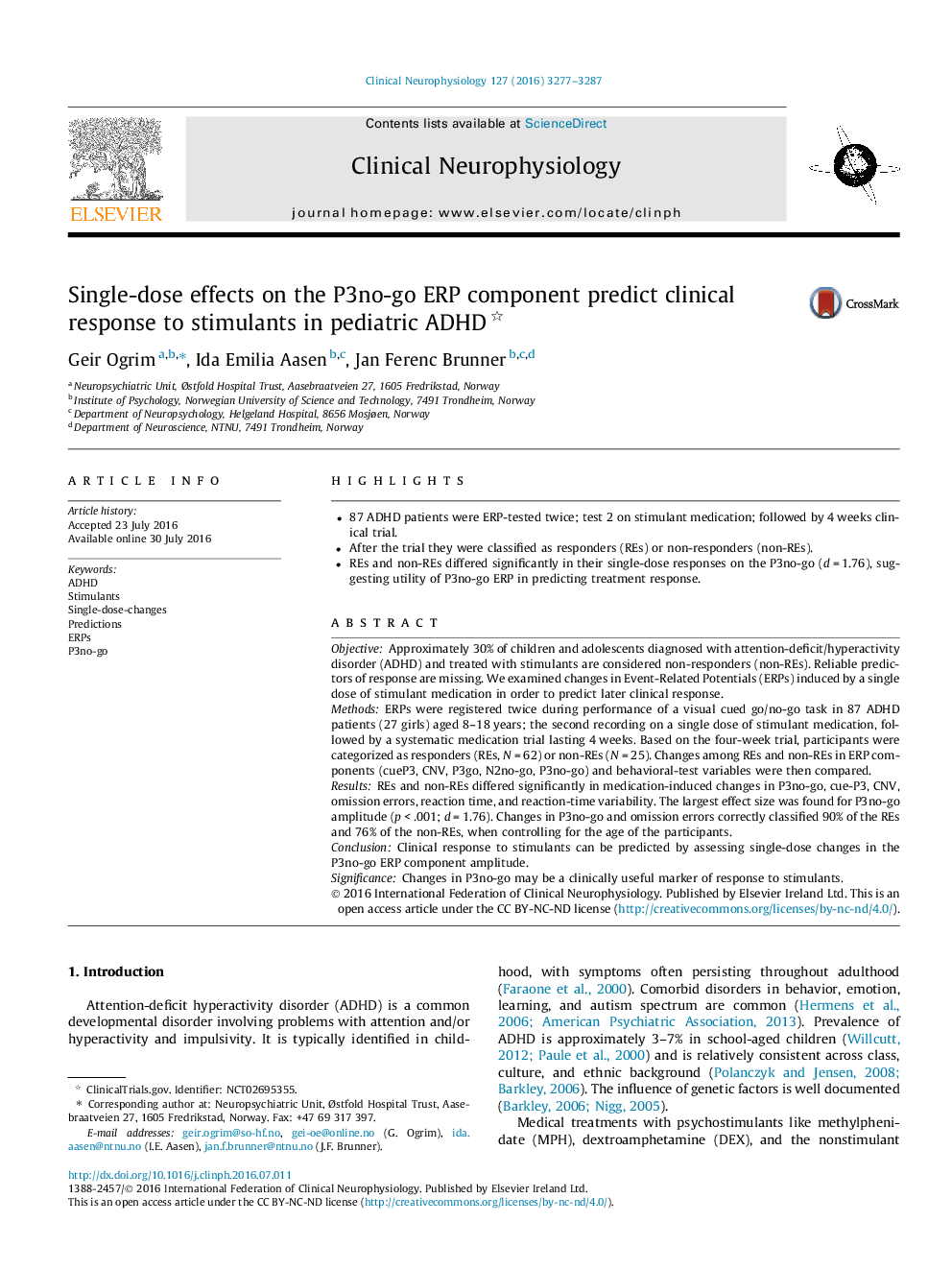| Article ID | Journal | Published Year | Pages | File Type |
|---|---|---|---|---|
| 5627871 | Clinical Neurophysiology | 2016 | 11 Pages |
â¢87 ADHD patients were ERP-tested twice; test 2 on stimulant medication; followed by 4 weeks clinical trial.â¢After the trial they were classified as responders (REs) or non-responders (non-REs).â¢REs and non-REs differed significantly in their single-dose responses on the P3no-go (d = 1.76), suggesting utility of P3no-go ERP in predicting treatment response.
ObjectiveApproximately 30% of children and adolescents diagnosed with attention-deficit/hyperactivity disorder (ADHD) and treated with stimulants are considered non-responders (non-REs). Reliable predictors of response are missing. We examined changes in Event-Related Potentials (ERPs) induced by a single dose of stimulant medication in order to predict later clinical response.MethodsERPs were registered twice during performance of a visual cued go/no-go task in 87 ADHD patients (27 girls) aged 8-18 years; the second recording on a single dose of stimulant medication, followed by a systematic medication trial lasting 4 weeks. Based on the four-week trial, participants were categorized as responders (REs, N = 62) or non-REs (N = 25). Changes among REs and non-REs in ERP components (cueP3, CNV, P3go, N2no-go, P3no-go) and behavioral-test variables were then compared.ResultsREs and non-REs differed significantly in medication-induced changes in P3no-go, cue-P3, CNV, omission errors, reaction time, and reaction-time variability. The largest effect size was found for P3no-go amplitude (p < .001; d = 1.76). Changes in P3no-go and omission errors correctly classified 90% of the REs and 76% of the non-REs, when controlling for the age of the participants.ConclusionClinical response to stimulants can be predicted by assessing single-dose changes in the P3no-go ERP component amplitude.SignificanceChanges in P3no-go may be a clinically useful marker of response to stimulants.
